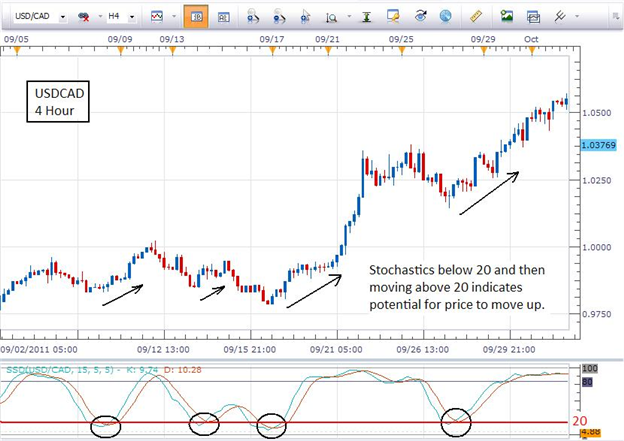Slow Stochastics: How to Trade with Slow Stochastics
Stochastics is one of the more popular indicators that can be used in trading. Momentum indicators will assist the trader in knowing when bullish momentum (pushing price up) is in force or bearish (pushing price down) momentum is in force.
Slow Stochastics will be found at the bottom of your chart. It is made up of two moving averages. The faster moving average is a blue line, the K line, while the slower moving average is the red line, the D line. These two MAs will move between the 80 line and the 20 line. If Stochastics is above 80, it said to be “overbought” and if it is below 20 it is said to be “oversold”.
When these two moving averages have been above the 80 line and begin to move down below 80, that indicates that downside, bearish momentum (pushing price down) is taking place. Conversely, when the two moving averages have been below 20 and begin to move above 20, it indicates that upside, bullish momentum (pushing priceS up) is taking place.
Take a look at the chart below for a visual a bearish, selling signal…

Take a look at the chart below for a visual a bullish, buying signal…

The key, as with any indicator, is to only take signals from the indicator in the direction of the predominate trend.
If the trend is down as in the case of the AUDUSD, we would only take selling signals from Stochastics. If the trend is up as is the case with the USDCAD, we would only take buying signals from Stochastics.
--- Written by Richard Krivo, Trading Instructor




